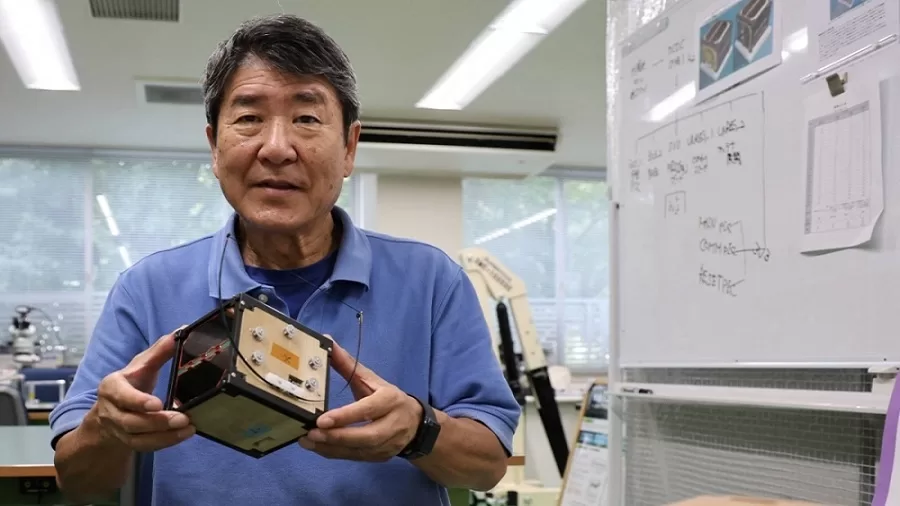Science & Environment
LignoSat: Japan Launches the World’s First Wooden Satellite

- Japan launched the world’s first wooden satellite, LignoSat, made of honoki wood, to promote eco-friendly space technology.
- Unlike metal satellites, LignoSat is meant to burn completely upon re-entry, addressing the issue of space trash and pollution.
- The mission will evaluate the robustness of wood in space, potentially opening the way for sustainable satellite materials in future low-Earth orbit missions.
Japan’s launch of LignoSat, the world’s first wooden satellite, marks a huge step towards more sustainable space technology. LignoSat, created by Kyoto University in collaboration with Sumitomo Forestry, demonstrates a novel use of hinoki wood, a variety of Japanese magnolia famed for its resilience. This project, which blends environmental mindfulness with modern engineering, has the potential to revolutionise satellite design and address the growing problem of space debris.
Why wood? The Case for Sustainable Satellite Materials
The use of wood in LignoSat addresses a major difficulty in modern satellite technology: space debris. Traditional satellites comprising metals and synthetic materials contribute to pollution when they re-enter the Earth’s atmosphere, releasing alumina particles that remain for years. Unlike these materials, wood burns entirely upon re-entry, leaving no toxic trace. This feature coincides with Japan’s dedication to eco-friendly advances, taking sustainable practices beyond Earth’s surface and into outer space.
LignoSat Design and Japanese Craftsmanship
LignoSat is a 10-centimetre cube made with no screws or glue, highlighting traditional Japanese carpentry techniques. These procedures prioritise precision and endurance, making honoki wood suitable for this satellite. The project combines traditional craftsmanship with cutting-edge technology, emphasising Japan’s distinct approach to sustainable space exploration. The satellite is outfitted with sensors to track its performance in space, particularly how it handles temperature extremes, radiation, and microgravity.
The Mission Involves Testing Wood in Space Conditions
LignoSat was launched on a SpaceX Falcon 9 rocket and will spend six months aboard the International Space Station (ISS). During this time, the satellite’s sensors will collect data on its structural integrity and material resilience to space conditions. The findings of this mission will assist scientists in determining the viability of wood as a long-lasting material for space applications, potentially leading to more sustainable satellite production procedures.
Addressing the Space Junk Crisis
The United States Department of Defence alone is tracking almost 27,000 bits of orbital debris, indicating that space trash is becoming an increasingly serious issue. This debris poses a threat to active satellites, space stations, and astronauts. LignoSat’s wooden architecture provides a potential answer, as it would burn up completely upon re-entry, decreasing the possibility of space trash. Dr. Takao Doi, a former astronaut and promoter of this initiative, emphasised the necessity of eco-friendly measures to prevent the future accumulation of space debris.
Looking Ahead: The Future of Wooden Satellites
If LignoSat operates successfully in space, it might establish a new norm for the use of renewable materials in satellite manufacturing. This result may encourage other space organisations and firms to use wood for short-term missions, particularly in low-Earth orbit. With the increasing demand for sustainable practices in space, LignoSat’s success may inspire new advancements and eco-friendly designs across the industry.
Conclusion: Pioneering Environmentally Friendly Space Technology
LignoSat is more than a satellite; it demonstrates Japan’s commitment to sustainability and innovation. Japan is pushing the boundaries of space technology by experimenting with novel materials and procedures. The mission demonstrates how traditional craftsmanship and environmental responsibility may work together to address current difficulties, potentially leading to a cleaner, more sustainable space environment.


















































